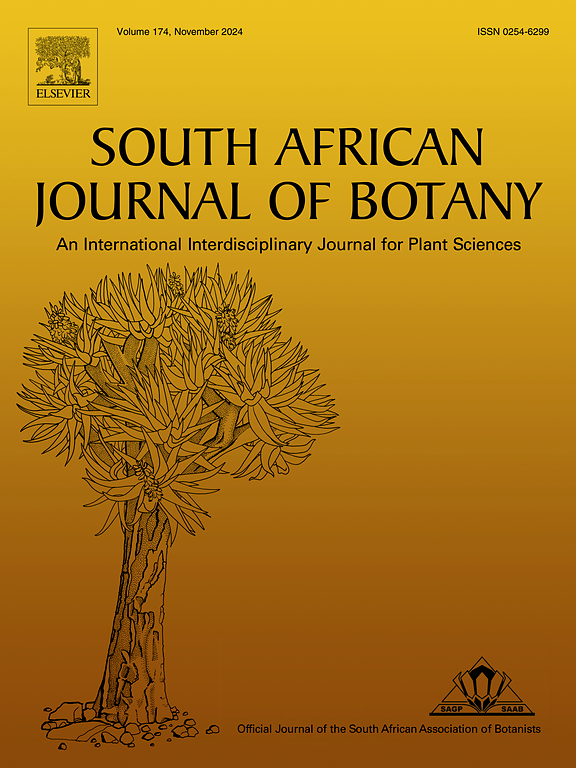Divergence in cold stress response in yacon [Smallanthus sonchifolius (Poepp. and Endl.) H. Rob.] clones with different ploidy levels
IF 2.7
3区 生物学
Q2 PLANT SCIENCES
引用次数: 0
Abstract
This study examines the effect of cold stress on the morphological, physiological and biochemical response of two yacon clones; an octoploid (2n = 58; designated as ECU 41) and a dodecaploid (2n = 87; designated as PER 14), with young plants being included in the study. Overall, the dodecaploid was more cold stress tolerant then octoploid. Cold stress caused a significant decrease in physiological variables such as Fv/Fm, gs, E, and PN in both clones, where more susceptible clone was ECU 41. In this clone, PN and E decreased with stress conditions by 20.63 and 66.67 % respectively. Further reductions of 32.81 % were observed in this clone for Fv/Fm and 66.67 % for gs. Pigments and RWC decreased at 336 h for both clones, and electrolyte leakage was higher in treated clones than untreated where the % difference after 336 h was 28.74 (PER 14) and 64.35 (ECU 41). Biochemical assay showed that cold stress increased MDA, proline, total phenolics, antioxidants, and flavonoids in plants compared to those under control conditions, with ECU 41 accumulating more than PER 14. Increased proline content by 182.88 % for ECU 41 is related to the resistance of this clone to low temperatures. Similarly, an increase of 80.31 % in MDA is a signal of membrane damage and thus lower stress resistance for ECU 41 as compared to 18.66 % for PER 14. This research provides an insight into young yacon plant responses at the beginning of the vegetative growth period which tends to be colder in many regions where yacon had been distributed to. Thus, it can be a limiting factor for cultivation and sufficient growing period length.
求助全文
约1分钟内获得全文
求助全文
来源期刊

South African Journal of Botany
生物-植物科学
CiteScore
5.20
自引率
9.70%
发文量
709
审稿时长
61 days
期刊介绍:
The South African Journal of Botany publishes original papers that deal with the classification, biodiversity, morphology, physiology, molecular biology, ecology, biotechnology, ethnobotany and other botanically related aspects of species that are of importance to southern Africa. Manuscripts dealing with significant new findings on other species of the world and general botanical principles will also be considered and are encouraged.
 求助内容:
求助内容: 应助结果提醒方式:
应助结果提醒方式:


